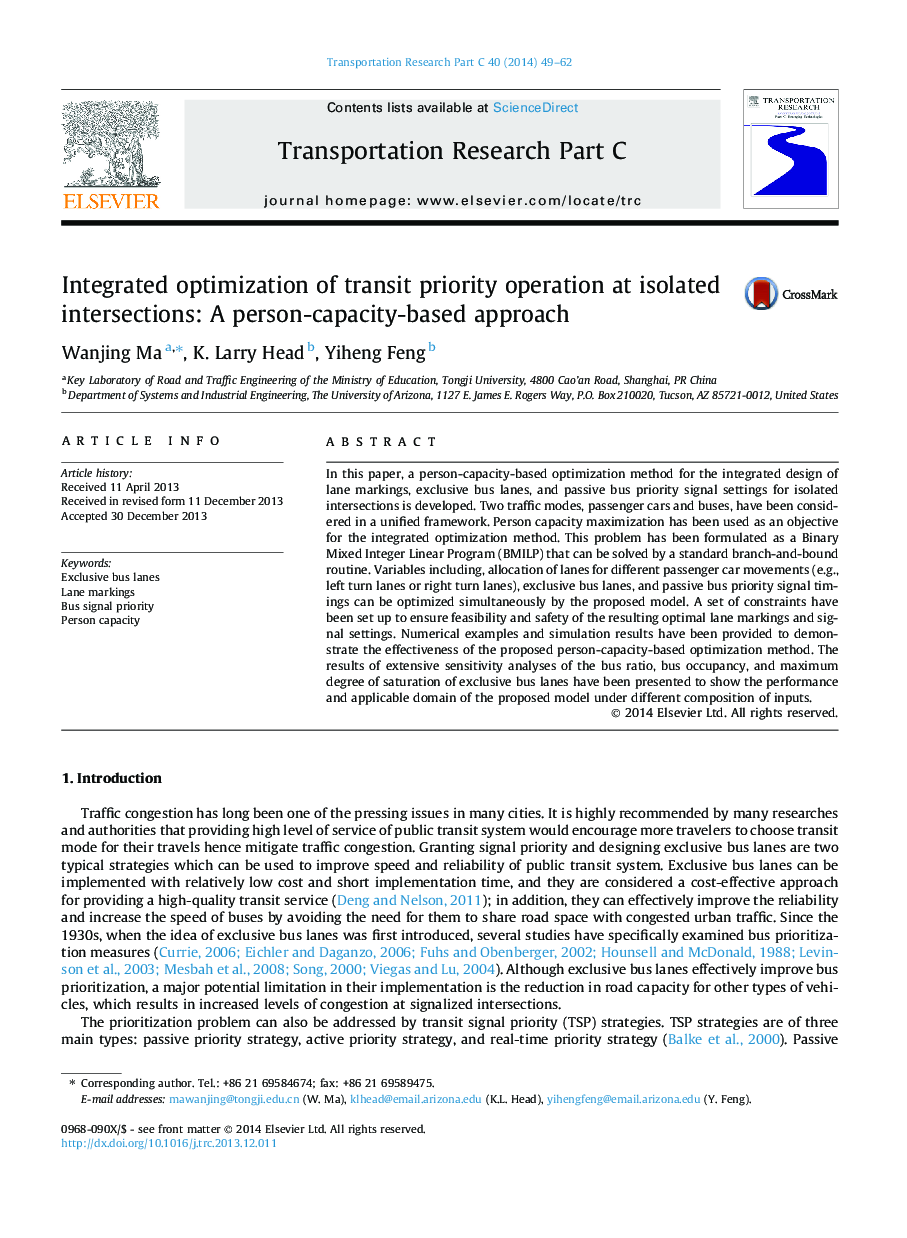| Article ID | Journal | Published Year | Pages | File Type |
|---|---|---|---|---|
| 525269 | Transportation Research Part C: Emerging Technologies | 2014 | 14 Pages |
•Lane markings, exclusive bus lanes, and passive bus priority signal settings are optimized simultaneously.•Person-capacity is used to make a tradeoff between buses and passenger cars.•Integrated optimization model benefits both buses and passenger cars.•Person capacity is sensitive to maximum degree of saturation and bus occupancy.
In this paper, a person-capacity-based optimization method for the integrated design of lane markings, exclusive bus lanes, and passive bus priority signal settings for isolated intersections is developed. Two traffic modes, passenger cars and buses, have been considered in a unified framework. Person capacity maximization has been used as an objective for the integrated optimization method. This problem has been formulated as a Binary Mixed Integer Linear Program (BMILP) that can be solved by a standard branch-and-bound routine. Variables including, allocation of lanes for different passenger car movements (e.g., left turn lanes or right turn lanes), exclusive bus lanes, and passive bus priority signal timings can be optimized simultaneously by the proposed model. A set of constraints have been set up to ensure feasibility and safety of the resulting optimal lane markings and signal settings. Numerical examples and simulation results have been provided to demonstrate the effectiveness of the proposed person-capacity-based optimization method. The results of extensive sensitivity analyses of the bus ratio, bus occupancy, and maximum degree of saturation of exclusive bus lanes have been presented to show the performance and applicable domain of the proposed model under different composition of inputs.
Graphical abstractFigure optionsDownload full-size imageDownload as PowerPoint slide
